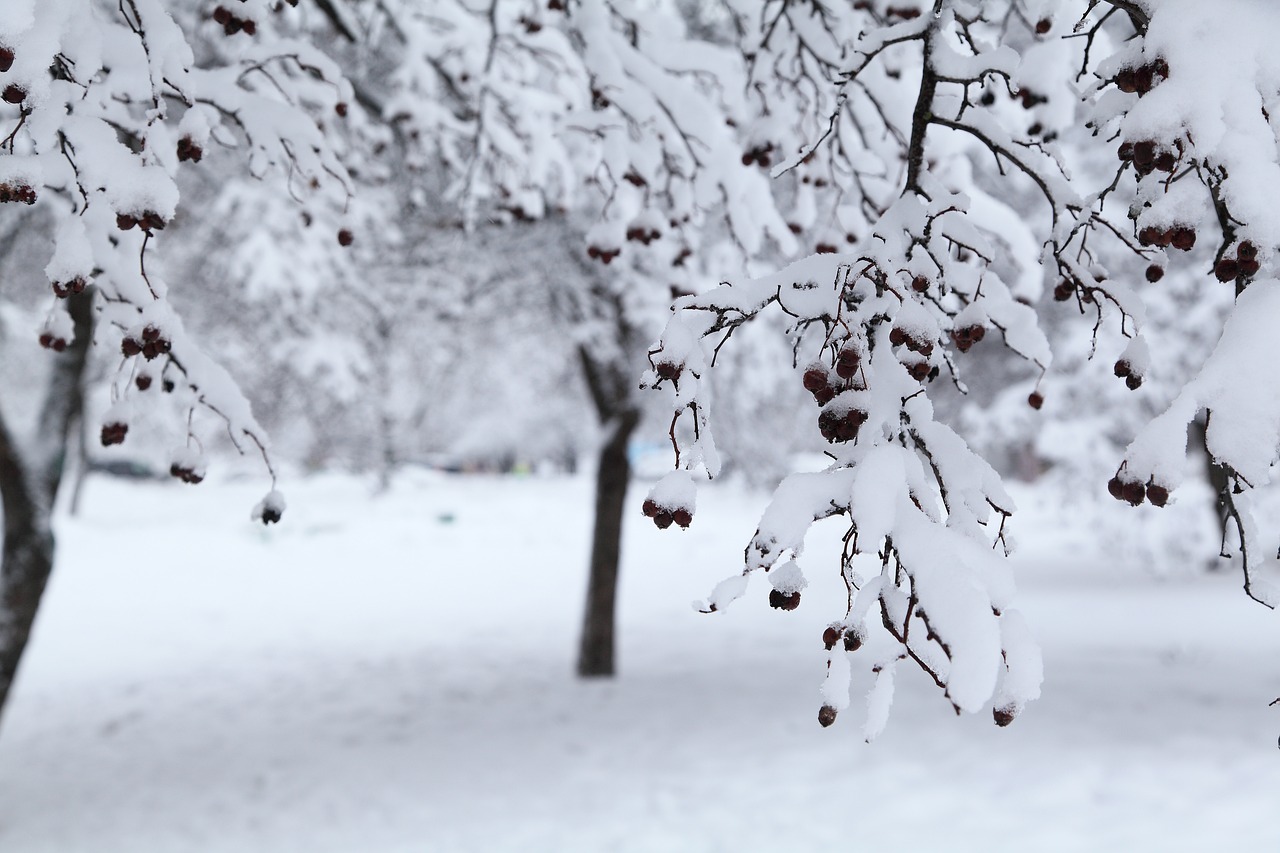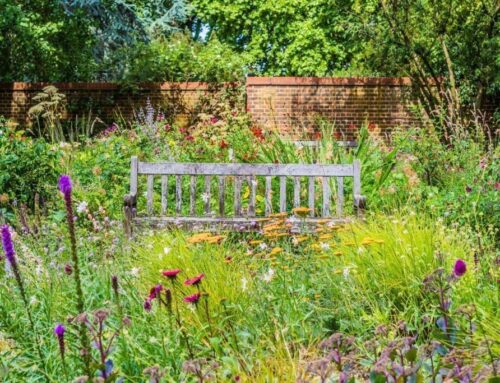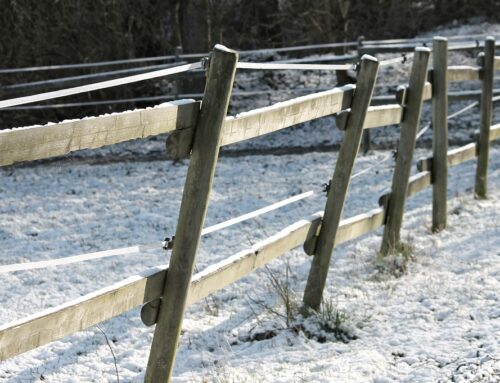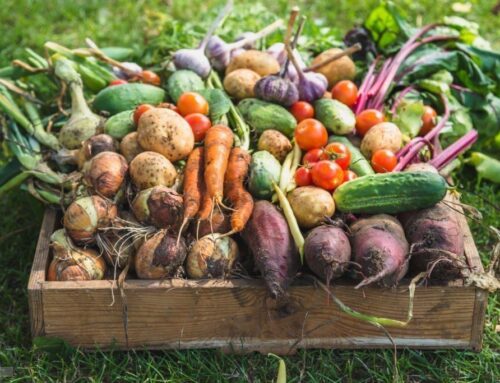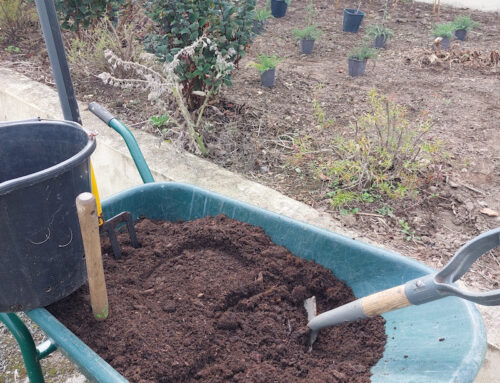Welcome to my 8 Essential Gardening Tasks to Tackle in January to-do list! As the winter season proceeds along its chilly path and the days start to get longer after the winter solstice, it’s time to start thinking about preparing your garden for the spring. While it may not be warm enough to start planting yet, there are still plenty of tasks that you can tackle in January to get your garden ready for the coming growing season. Garden care continues throughout the year from cleaning up the garden beds and pruning shrubs to starting seeds indoors and planning your garden layout, there is plenty to keep you busy this month. So grab your gloves,pruning shears and maybe a hot cuppa; let’s get started!
The To-Do List
- Clean up the garden beds: Remove any remaining leaves, weeds, and debris from the garden beds. This will help to make your garden look neat and tidy, and it will also help to reduce the risk of pests and diseases.
- Prune shrubs and trees: January is a good time to prune many shrubs and trees, as they are dormant and not actively growing. Pruning helps to encourage new growth and can also help to shape and control the size of your plants.
- Divide and transplant perennials: If you have any overcrowded perennials, now is a good time to divide them and transplant them to new locations in the garden. This will help to rejuvenate the plants and give them more room to grow.
- Plant cold-hardy vegetables: January is a great time to plant cold-hardy vegetables such as kale, broccoli, and Brussels sprouts. These vegetables can tolerate frost and will start to grow as soon as the weather warms up.
- Start seeds indoors: If you want to get a jump start on the growing season, consider starting seeds indoors in January. This will allow you to get a head start on the growing season and have a larger selection of plants to choose from.
- Repair and maintain garden tools: Take some time to clean, sharpen, and repair any garden tools that you have. This will help to ensure that they are in good condition and ready to use when the growing season begins.
- Plan your garden layout: Use the quiet time of winter to plan out your garden layout for the upcoming year. Consider factors such as sun exposure, soil quality, and the specific needs of the plants you want to grow.
- Consider adding mulch: If you have not already done so, consider adding a layer of mulch to your garden beds. Mulch helps to retain moisture, suppress weeds, and regulate soil temperature, all of which can help to improve the health and vitality of your plants.
Lets take a look at three of these January jobs in a little more detail below.
Sow & Grow: Plants to start this month
Starting seeds indoors in January can be a great way to get a jump start on the growing season. This is particularly useful for plants that have a long germination time or for plants that are sensitive to frost and cold temperatures. Two examples of plants that always have a spot in my garden and you might consider starting indoors in January are calendula and Iceland poppies.
Calendula, a particular favourite of mine, also known as pot marigold, is a flowering plant that is native to the Mediterranean region. It has bright orange or yellow flowers and is often used in gardens as a bedding plant, in container gardens, or as a cut flower. Calendula seeds are easy to germinate, but they do have a relatively long germination time of 14-21 days. By starting them indoors in January, you can ensure that they will be large enough to transplant outside once the weather warms up. This will also lengthen the flowering season as they will start a month or so earlier.
Iceland poppies are another plant that you might consider starting indoors in January. They are a hardy perennial that is native to the Arctic and Alpine regions of Europe, Asia, and North America. They have cup-shaped flowers that come in a range of colors including white, yellow, orange, pink, and red. Iceland poppies are hardy plants that can handle frost and cold temperatures well but if you are looking for a big, healthy transplant, it is best to germinate seeds indoors around January for them to be ready for transplantation around late spring.
Both calendula and Iceland poppies can be started indoors in January using seed trays or pots filled with seed-starting mix, placed in a sunny or well-lit location. Both will germinate when temperatures are consistently above 2 degrees centigrade with the optimum temperature range between 16 to 17 degrees centigrade . Once the seedlings are big enough, they can be transplanted into your garden or into larger pots.
Maximise your assets: Divide & transplant perennials
Dividing and transplanting perennials in January can be a great way to rejuvenate plants that have become overcrowded and give them more room to grow. When perennials become too crowded, their growth may become stunted and they may have reduced blooming. Dividing the perennials and transplanting them to new locations in the garden can help to improve their overall health and vigor.
Here are five examples of perennials that can be divided and transplanted in January if ground conditions allow:
- Black-eyed Susan (Rudbeckia): These hardy perennials have golden yellow petals surrounding a dark brown central disk, and are known for their ability to attract pollinators. They prefer well-drained soil and full sun.
- Coral Bells (Heuchera): These perennials have beautiful foliage that comes in shades of red, orange, green and purple, and small spikes of white, pink or red flowers. They are shade-loving plants and are great as ground covers.
- Daylilies (Hemerocallis): These perennials have showy, trumpet-shaped flowers that come in a range of colors, including yellow, orange, pink, and red. They are easy to grow and can tolerate a wide range of soil and light conditions.
- Hosta: These perennials are known for their large, lush foliage that comes in shades of green, yellow and blue. They prefer shade and well-drained soil.
- Shasta Daisy (Leucanthemum x superbum): These perennials have white daisy-like flowers with yellow centers and are known for their ability to attract pollinators. They prefer full sun and well-drained soil.
When dividing perennials, it’s best to use a sharp shovel or garden fork and gently lift the entire clump of plants out of the ground. Then, use your tools to gently separate the plants into smaller sections, making sure that each section has a good amount of roots and foliage. The divided plants can then be transplanted to their new locations in the garden, making sure they are planted at the same depth as they were originally and well-watered after.
Prune & Trim: Shape up your trees & shrubs
Pruning shrubs and trees in January, while they are dormant and not actively growing, can be an effective way to encourage new growth and shape the size of your plants. Pruning also helps to remove dead or diseased branches, promote better fruit and flower production and allows for better light penetration to the interior of the plant.
Here are a few examples of trees and shrubs that can be pruned in January:
- Fruit Trees: Apples, Pears and Peaches are all examples of fruit trees that should be pruned in late winter or early spring. Pruning fruit trees in January allows for better light penetration and air circulation which can help to reduce the risk of disease.
- Deciduous Shrubs: Many deciduous shrubs, including flowering varieties like Spirea, Dogwood, and Lilac should be pruned in January. Pruning these shrubs will help to encourage new growth and can also help to shape the plant.
- Evergreens: Some evergreen shrubs such as juniper, yew, arborvitae can be pruned in January but it is important to note that evergreens retain their leaves all year round so pruning should be done with care so as to not damage new growth or leave unsightly brown tips.
- Hedges: Hedges, such as boxwood, holly and privet, should be pruned in January as well, to keep them in shape and maintain their desired form.
It is always a good idea to have a look at the specific pruning requirements for the tree or shrub that you want to prune. It is also a good idea to have the appropriate pruning tools such as pruning shears, loppers and saws when starting pruning. When moving from one plant to another, I would always advise that you treat the blades of your pruning tools with either rubbing alcohol or a weak bleach mix to reduce the risk of spreading any disease.
If you are unsure about how to prune a specific tree or shrub the RHS have a great pruning guide.
Happy Gardening :)
In conclusion, tackling these eight essential gardening tasks in January can help get your garden ready for the spring season. From pruning and cleaning up debris to protecting tender plants and planning for the future, these tasks will help ensure that your garden is healthy and flourishing come springtime. Whether you are a seasoned gardener or new to the hobby, taking the time to prepare your garden now will pay off in the long run.
If you have all of these tasks completed, why not get ahead start and checkout my February Jobs list.

